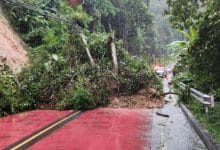Death toll rises in Papua New Guinea’s catastrophic landslide

In the wake of a catastrophic landslide in Papua New Guinea, the International Organisation for Migration (IOM) grimly raised its estimate of the death toll, now surpassing 670. As emergency responders and anguished relatives come to terms with the situation, hopes of finding survivors are fading.
The Chief of the UN Migration Agency’s mission of the South Pacific island nation, Serhan Aktoprak revealed that a revision in death toll numbers is based on assessments conducted by local officials indicating that over 150 homes were engulfed by the landslide that struck on Friday.
Previously, the estimate had stood at 60 homes while the death toll was placed at 100 or more. However, by yesterday, May 27, only five bodies and a portion of a sixth victim had been recovered.
The deployment of an excavator, donated by a local builder, marked the first instance of mechanical aid in the recovery operation.
Efforts to assist survivors were hampered by the unstable terrain and ongoing tribal conflicts, prevalent in the Papua New Guinea Highlands.
Officials stated that approximately 250 additional houses have been deemed uninhabitable due to continued ground movement, rendering some 1,250 people homeless.
Local relief
While local relief efforts are underway, the national government is contemplating the necessity of soliciting further international assistance.
With the realisation dawning that there may be no survivors beneath the layers of earth and debris, mourning has gripped the affected communities.
Aktoprak cautioned that the revised death toll is not definitive, as it is based on average household sizes in the region. He refrained from speculating whether the actual toll could be higher, emphasising the importance of accuracy in reporting.
As authorities establish evacuation centres and grapple with the aftermath, logistical challenges persist. Convoys transporting essential supplies to the affected village have encountered risks stemming from tribal clashes along the route.
Tensions flared on Saturday in a clash between rival clans, resulting in casualties and property damage unrelated to the landslide.
While tribal combatants are not expected to target relief convoys, concerns remain regarding opportunistic criminal activity amidst the chaos.
Relief efforts
The magnitude of the disaster has underscored longstanding challenges in accurately assessing population figures in the region, further complicating relief efforts.
As humanitarian agencies prioritise relocating survivors to safer areas and providing essential aid, the full extent of injuries and missing persons is still being determined.
Government officials, including Defense Minister Billy Joseph and National Disaster Center Director Laso Mana, are actively assessing the situation on the ground to ascertain further requirements.
Amidst expressions of readiness from countries such as the United States and Australia to extend assistance, Papua New Guinea grapples with the aftermath of one of the deadliest disasters in its recent history, reported AP.
Latest Thailand News
Follow The Thaiger on Google News:


























